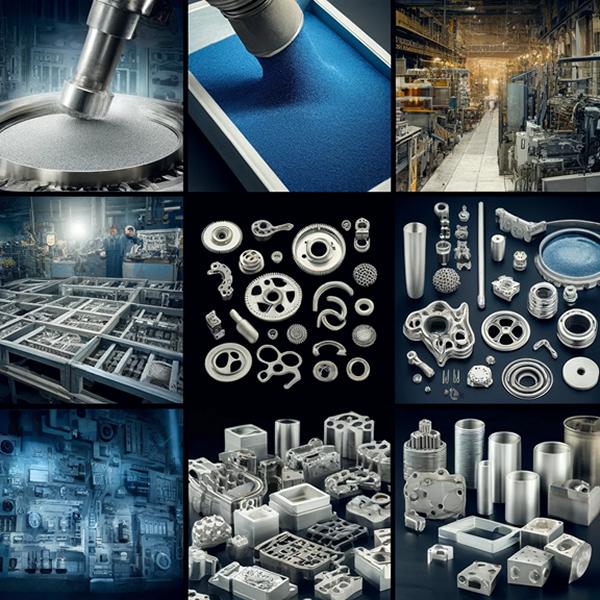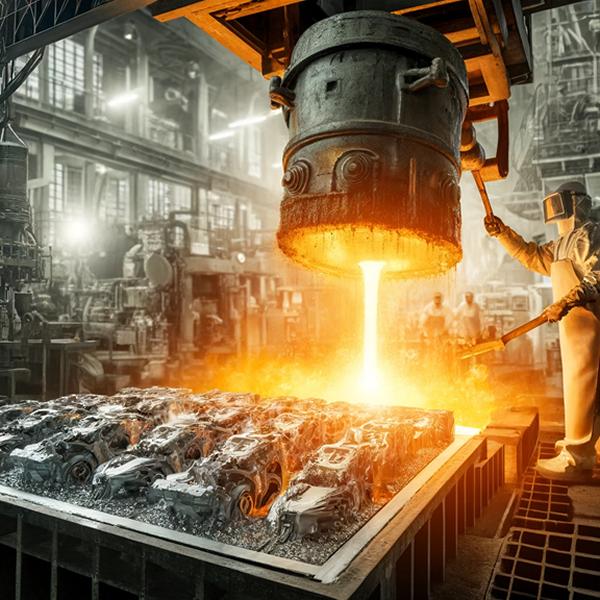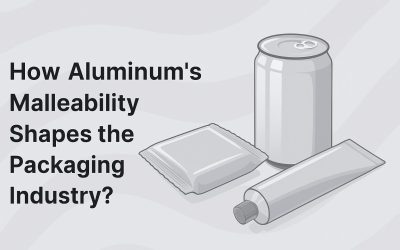How to Choose Aluminium Die Casting Components?
This blog helps in picking Aluminium die casting components. You will learn what parts like gearboxes and ribs are. The blog shows how to find good makers using ISO 9001 and CNC.
It explains key terms like DFM, PPM, and MagmaSoft. Understanding the lead times and tolerance levels like ±0.02 is important. It also covers supplier questions and audits. This helps make strong, useful parts.
What are Aluminium Die Casting Components?
Aluminium die casting components play a role in manufacturing items such as vehicle components. These can be engines, brackets, or housings. It involves the use of molten aluminum by pouring it into a die casting tooling. This mold forms the parts accurately. These are smooth walled structures with high strength.
Aluminum grades are identified by technical numbers like 6061 and A356. The parts are lightweight but sturdy. CNC machines generate precise size and shape. These parts are useful in many machines.
Why Is Material Selection Important For Aluminium Die Casting Components?
Aluminium Alloys
Aluminium Die Casting Components need aluminium alloys like A380 and 6061. These alloys are strong. They work well in machines. A380 helps make engines. 6061 helps make car parts.
A380 has silicon. 6061 has magnesium. Both alloys stay cool in heat. They also don’t rust. A380 and 6061 can be shaped. Engineers like using these alloys.
Material Properties
Aluminium Die Casting Components use strong materials. These materials handle heat. They do not break easily. A380 and 6061 are two. A380 is hard. 6061 is strong.
Hard materials last long. Strong materials hold heavy parts. Some materials also resist rust. This keeps them shiny. Machines need these properties. It helps them work well.
Performance Impact
Good materials make parts work better. Strong parts do not break. Light parts move fast. Aluminium alloys are light. They help cars go fast. Some alloys cool quickly. This helps engines.
Rust-free parts look nice. They last long too. Engineers pick the best alloys. This helps machines work well. Kids, strong parts make fast cars!
Alloy Selection
Choosing the right alloy is key. A380 has silicon. It makes it hard. 6061 has magnesium. It makes it strong. Engineers choose based on need. Car parts need 6061. Engine parts need A380.
Each alloy has a job. Picking the right one is smart. This makes machines safe.
Key Factors
Picking materials needs thought. Strength is one factor. Aluminium is strong. Weight is another. Aluminium is light. Heat resistance is key too. Aluminium stays cool.
Rust resistance is important. Aluminium does not rust. Each factor matters. Engineers check each one. They choose the best materials. This makes machines last. Kids, good choices make safe things!
| Criteria | Aluminium Alloys | Material Properties | Performance Impact | Alloy Selection |
| Common Alloys | A380, 6061 | High strength | Increased durability | A380: Silicon, 6061: Mg |
| Composition | A380: Silicon | Heat resistance | Enhanced performance | A380: Engine parts |
| Mechanical Properties | 6061: Magnesium | High hardness | Faster operation | 6061: Car parts |
| Applications | Engines, brackets | Longevity | Improved efficiency | Based on application |
| Weight | Lightweight | Rust resistance | Lightweight benefits | Specific to need |
| Durability | High durability | Non-corrosive | Extended lifespan | Strength vs. hardness |
| Heat Tolerance | High | High | Better heat management | Application specific |
Table on Why Is Material Selection Important For Aluminium Die Casting Components!
What Are The Design Considerations For Aluminium Die Casting Components?
Design Principles
Designing parts needs clear rules. These rules help in creating strong shapes. Walls should be the same thickness. Uneven walls can cause weak spots. Using ribs strengthens the parts.
Adding draft angles helps in removing parts from molds. Using fillets smoothens sharp corners. Parts should have holes and bosses for assembly. Following these rules ensures good aluminium die cast components.
Manufacturability
Making parts needs careful planning. Parts should be easy to mold. Simple shapes are best. Complex shapes can cause issues. Parts need ejector pins for removal.
Draft angles help in smooth removal. Parts should avoid deep pockets. These pockets can trap air. Parts must have uniform walls. Consistent walls prevent defects. Planning ensures smooth production.
Production Efficiency
Efficient production saves time. Faster production means more parts. CNC machines cut parts quickly. Automated systems help speed up. Less manual work is better.
Using multi-cavity molds helps. These molds make many parts at once. Faster cooling systems help parts cool quickly. Better cooling means less waiting. Efficient production makes many good aluminium die casting components.
Cost Optimization
Saving money is important. Using less material helps. Thin walls save metal. Recycling scrap saves costs. Using common alloys like 380 is cheaper. Fewer steps in production save time.
Less time means less money spent. Automated systems cut costs. Multi-cavity molds save on tooling. Cost-saving makes parts affordable.
Design Impact
Good design makes strong parts. Strong parts last longer. Design affects part life. Poor design can cause breaks. Using ribs adds strength. Adding fillets prevents cracks.
Good design ensures fit. Parts must fit together well. Proper design leads to happy users. Good parts make good aluminium die casting components.
What Are The Surface Finish Options For Aluminium Die Casting Components?
Surface Finish Techniques
There are many ways to finish parts. Sandblasting makes surfaces smooth. Shot peening increases strength. Anodizing adds color and protection. Powder coating gives a tough finish.
Electroplating adds a metal layer. Machining can create fine details. Polishing makes parts shiny. Each technique has unique results. Combining techniques can improve parts. Knowing these methods helps in choosing the best one.
Finishing Options
Different finishes help parts look and perform better. Brushing gives a textured look. Chrome plating adds shine and resists rust. Painting provides color and protection.
Polishing removes rough spots and makes parts smooth. Chemical etching adds detailed designs. Each finish has a specific use. Choosing the right finish is important. Good finishes improve part quality.
Benefits
Finishing parts has many benefits. It protects parts from damage. Finishes like anodizing resist wear. Powder coating prevents corrosion. Smooth surfaces reduce friction.
Shiny finishes look nice. Strong finishes last longer. Each benefit improves part performance. Finishing also makes parts easier to clean. Good finishes add value to aluminium die casting components.
Limitations
Finishes have some limits. Anodizing can be expensive. Electroplating needs special equipment. Powder coating requires high temperatures. Some finishes may change part size.
Not all finishes work on every alloy. Thin parts can be damaged by some finishes. Each finish has specific needs. Knowing these limits helps in choosing the best finish.
Application Requirements
Different parts need different finishes. Car parts often use powder coating. Medical parts need smooth surfaces. Aerospace parts use anodizing for strength.
Electronic parts need precise finishes. Each industry has specific needs. Matching the finish to the application is key. Good finishes meet these needs. Proper finishes ensure part Aluminium die casting components.
How To Ensure Dimensional Accuracy In Aluminium Die Casting Components?
Dimensional Accuracy
Dimensional accuracy is crucial. It indicates that it fits or matches well. One of the advantages of using CNC machines is that they are very accurate. Tolerances like ±0.005 are standard.
In this case, accurate molds assist in attaining the right sizes. Use of calipers ensures that sizes of the parts are correct. Consistent monitoring maintains accuracy. Quality control is vital.
Applying 3D scanning can point out mistakes. This means that accuracy assures that parts function as they are required to. Accuracy results to production of quality parts.
Tight Tolerances
Wherever there are tight tolerances, there will be tight fits. Each part must adhere to the designs closely. Tolerances like ±0.002 ensure exactness. Using high-quality molds helps. CNC machines have the capability to work at close tolerances.
Ensure periodic touch with micrometers to make certain of precision. Preventing problems is much easier than solving them and this is why it is advisable to maintain strict tolerance limits. They ensure reliable performance. Tightly fitted parts are well fitted. Precision means better products.
Precision
Accuracy is critical for parts. Exact measurements are needed. CNC machining provides precision. That is why it is helpful to use molds with high accuracy. Components must conform to design requirements. Regular inspections ensure precision.
Laser measuring tools can help Laser measuring tools can help. Through holding precision, the quality of the parts is enhanced. Precision parts perform better. Accuracy is one of the critical aspects of aluminium die casting components manufacturer.
Critical Applications
High-risk applications require accurate components. Aerospace uses high-accuracy components. Medical devices should have very precise dimensions. The car parts and accessories need to fit seamlessly. Strength is given by the use of 7075 alloy. High precision prevents failures.
CMM is used in checking parts to make sure that it is accurate. Business critical applications require high quality. Accurate parts ensure safety. Accuracy is very important in these fields.
Key Factors
Key factors ensure accuracy. Proper mold design is essential. Using high-quality alloys helps. Regular inspections are necessary. CNC machines thus deliver quality and accurate results all the time. Accuracy is achieved through monitoring during production.
There is nothing more important than calibration of tools. Training workers improves precision. Following guidelines ensures quality. These factors result in reliable Aluminium die casting components.
Techniques
Various techniques ensure accuracy. CNC machining gives exact sizes. 3D scanning detects errors. Using quality molds helps. Regular inspections maintain precision. Standardizing tools helps ensure measurement accuracy. Laser cutting provides clean and accurate cuts.
Staff training makes it possible to ensure compliance with the proper techniques. Combining methods improves accuracy. These techniques result to high quality parts.
What Are The Post-Casting Treatments For Aluminium Die Casting Components?
Post-Casting Treatments
After casting, trim flash from edges. Deburr to remove sharp bits. Shot peening strengthens the surface. T6 heat treatment hardens parts. Anodizing protects against corrosion.
Clean parts with degreaser. X-ray checks for hidden cracks. CNC machines cut precise holes. Polish for a smooth finish. Electroplating adds a shiny coat. Inspect dimensions with calipers. Paint for color and protection. Use sandblasting to clean surfaces. Finally, pack parts safely.
Heat Treatment
Heat treatment makes parts stronger. First, heat the parts to 520°C. Hold for hours. Then, quench in water. Use ovens for even heating. Thermocouples monitor temperatures.
Soaking reduces internal stresses. T6 process is common. Oil quenching is fast. Parts tend to cool slowly. Aging adds strength. Hardness tests check results. Use cooling racks. Strong parts last longer.
Machining
Machining shapes the parts. CNC mills cut precise features. Lathes turn round parts. Drills make holes. End mills create slots. Tolerances are tight. Use cutting fluids. Inspect with micrometers. Remove burrs after cutting. Surface finish is smooth. High-speed spindles work fast.
Coolant prevents overheating. Clamps hold parts steady. Tool wear needs monitoring. Change dull tools. Machining centers automate the process. Parts fit together perfectly.
Enhancing Properties
Improve parts by adding coatings. Anodizing increases corrosion resistance. Use zinc for galvanizing. Electroplating adds a protective layer. Powder coating gives a tough finish. Painting adds color. Add lubricants for smoother movement. Use sealants to prevent leaks.
Heat treat for hardness. Shot peening reduces fatigue. Clean parts before coating. Inspect coatings for defects. Thickness matters. Properly applied coatings last long. Enhanced parts work better.
Process Selection
Choose the right process for parts. Die casting is fast. Sand casting makes big parts. Investment casting is precise. Each process has pros and cons. Choose based on part size. Consider part shape. Look at required tolerances. Evaluate material properties. Cost matters too.
Automation speeds up production. Use robots for repetitive tasks. Inspect parts at every step. Good process choice saves time. Reliable parts need the right process.
How To Select A Reliable Manufacturer For Aluminium Die Casting Components?
Choosing Manufacturer
Choose a location that manufactures die cast parts. Use CNC. Look for ISO 9001. Determine if they produce gearboxes. Make sure they can build both the A380 and the ADC12.
Ask about the tolerance levels, such as ±0.02. Discover more about their minimum order quantity such as 500 pieces. Make sure that they are using multi-cavity molds. Ask if they use CMM for testing. Ensure that they are capable of doing T6 heat treatment. Ask if they operate hot chamber machines. JIT delivery options should be considered.
Key Factors
Evaluate lead times. Find out how many cycles the die is expected to last, or 100k cycles for instance. Make sure that they employ DFM methods. Check their PPM rate. Check if they employ the use of MagmaSoft for simulation purposes. Ask about SPC control.
Ensure that they offer PVD coating service. Check if they are compliant with PPAP processes. Examine their ability to create thinner walls, such as 1.5mm. Search for die lock angle precision. Ask for the company’s annual production capacity.
Supplier Questions
Inquire about tool design services. Determine how many project managers they have. Find out how knowledgeable they are with Zamak 3. We should ask about their examination techniques such as X-ray. Confirm their defect rate. Inquire if they do die maintenance.
Check if they provide LSR molding. Examine their capacity for undercuts. Ask about rapid prototyping. Make sure they adhere to RoHS standards. Inquire whether they offer material certifications.
Capabilities
Ensure use of high pressure machines. Ask about the casting tonnage such as 800 tons. Check for multi-slide machines. Ask if they perform second operations, such as tapping. Examine how they employ EDM for die making. Ensure they can work with thin ribs, such as 2mm.
Check if aluminum die casting manufacturers provide powder coating services. Make sure they are capable of vacuum casting. Inquire more about their CNC finishing services. See if they have robotic automation.
Supplier Audits
Perform ISO 14001 checks. Review their OEE scores. Check their FMEA records. Make sure that they have an SPC system in place. Confirm their implementation of ERP software.
Review their TPM programs. Consider their past record of scrap rates. Check their OSHA compliance. Review their calibration logs. Examine their 8D reports. Check out their quality lab Aluminium die casting components.
Quality Assurance
Make sure they use Six Sigma. Check their CPK values. Ask them to confirm that they do 100% inspection. Inquire about their APQP process. Ensure use of 5S. Look for GDT compliance.
Inquire about their traceability system. Check if they have a quality assurance team. Evaluate their root cause analysis tools. Confirm whether they are using MSA. Make sure they have aluminium die casting components reports.
Conclusion
Choosing Aluminium Die Casting Components needs many considerations. Ask about lead times, PPM rates, and MagmaSoft use. Make sure they can do thin ribs and T6 heat treatment. Learn more by visiting ALUDIECASTING. Strong parts need careful choice. Happy selecting!
If you are looking for aluminium die cast components companies for your project, welcome to contact us, we will send you quote in 24 hours.









0 Comments